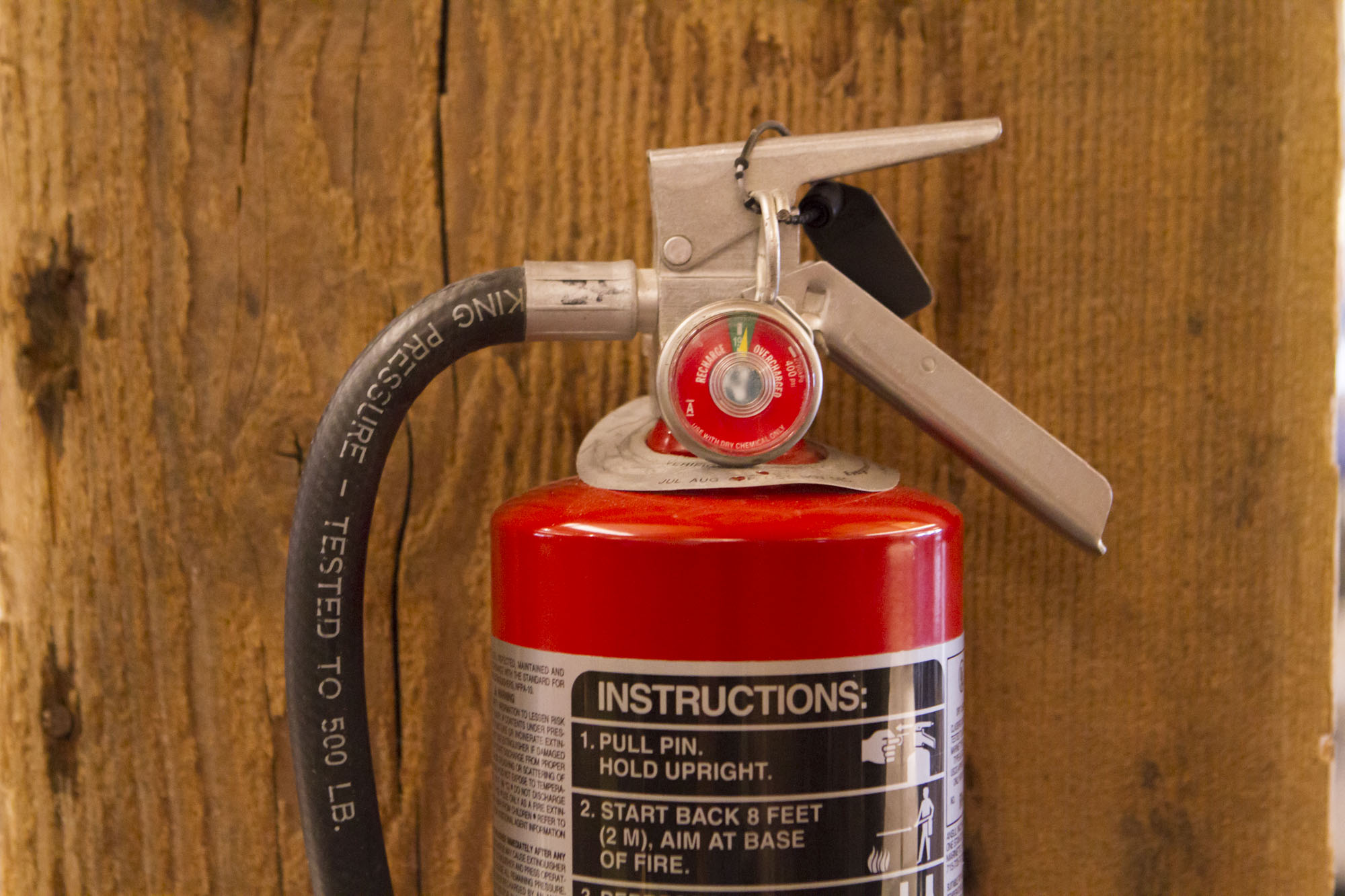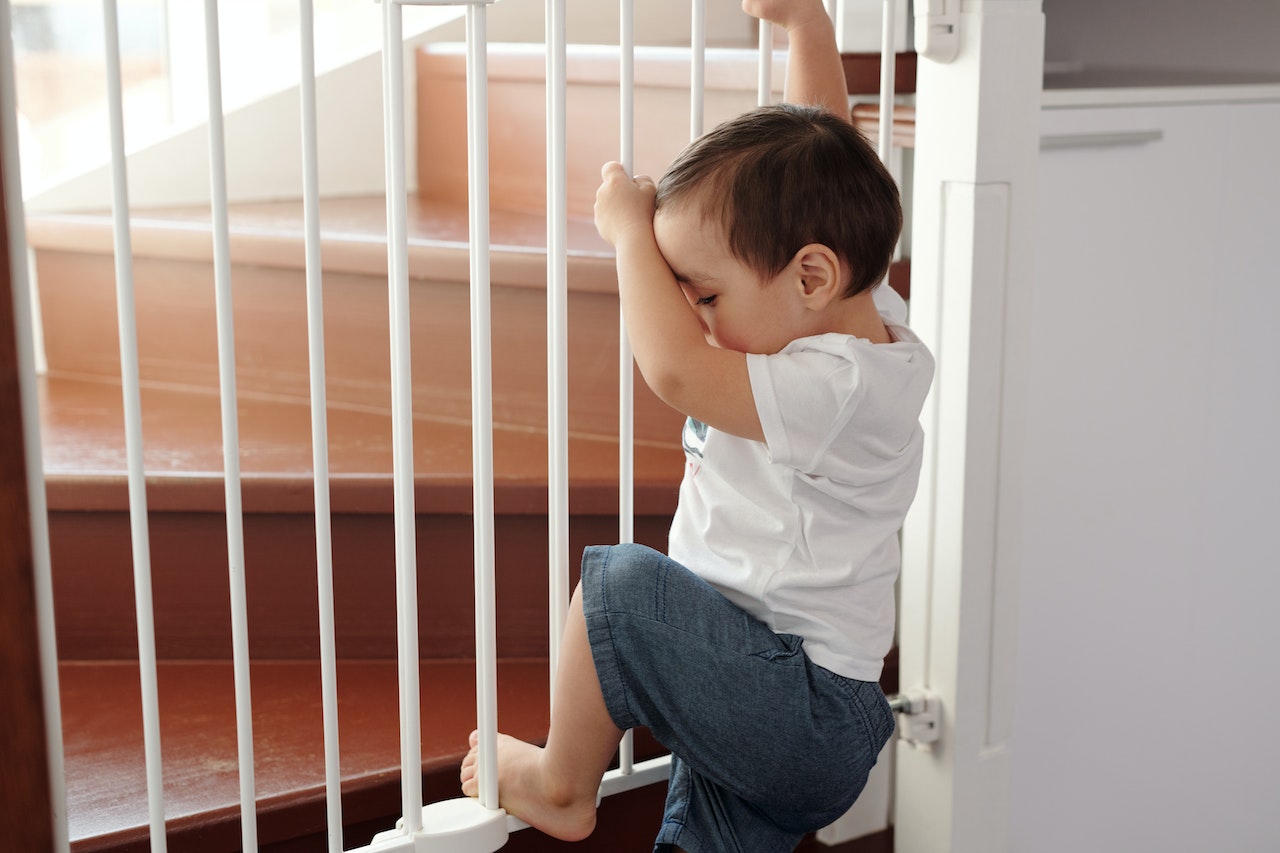Unintentional house fires are terribly frightening, not to mention costly and sometimes, deadly. Knowing what type of fire extinguisher to have in your home and how to use it can alleviate worry and make you and your family feel more prepared for this type of emergency. You’ve probably experienced a fire-related emergency in your own home. Have you ever watched a spark fly out of the fireplace onto a nearby rug? Or have your pan of food catch fire on the stove (or in the microwave)? Fire caused over $6.8 billion worth of damage to homes in 2013 and accounted for over 12 thousand injuries and 2,755 deaths*. Let’s take a look at what type of fire extinguisher you should have in your home, how many you should have, where they should be located, and how to use them.
What type of fire extinguisher should I have?
Fire extinguishers come in various sizes, shapes and formulas to combat the different types of fires you might encounter in a home situation. Grease fires, for example, are caused when oil or grease (like bacon grease, cooking oil or lard) comes into contact with high heat. In fact, “cooking” is the leading reported cause of house fires and accounts for about 50% of residential building fires, according to the U.S. Fire Administration.* A grease fire requires a Class K fire extinguisher (or look for one that says “for cooking fires”). Here are the different classes of fire extinguishers and their purpose:
Class A: The Class A extinguisher is meant to combat ordinary combustibles like firewood (and other wood), paper, cloth, and plastics. This is the best extinguisher to have near the fireplace or fire pit (like a camp fire). This type of fire can be extinguished with water as well. “A” stands for Ash.
Class B: A Class B fire is one in which the fuel source is a combustible gas or liquid. Examples would be propane, gasoline, ethanol or butane. These gases and liquids are highly flammable, but can also burn out quickly if the fuel source is removed (like if the propane tank were turned off). But this type of fire can spread quickly. The garage, shed or workshop are a common place for these gasses and liquids to be stored, so it’s important to have this type of extinguisher on hand within those spaces. “B” stands for Barrel.
Class C: The Class C extinguisher is designed for electrical fires. Electrical fires can be caused by appliances, overloaded outlets, circuitry boards, or other electrical components. In this type of fire, the electrical current is the fuel source, and until it is cut off the fire may continue to burn. Never use water to put out an electrical fire! Water and electricity don’t mix, and you can suffer from electrocution by using water to douse an electrical fire. “C” stands for Current.
Class D: Although more rare in the home, a Class D fire is one caused by combustable metal like potassium, magnesium or calcium. This type of fire is more common to laboratories, businesses and factories. But it can also happen inside the home if these types of metals are used for hobbies or home-based businesses. “D” stands for Dynamite.
Class K: Class K extinguishers help put out grease fires, like in the kitchen. This type of extinguisher relies upon saponification, which means it turns the fuel (in this case, fat) into soap. Never use water to put out a grease fire! Water can actually make a grease fire spread and splash, and it can be incredibly damaging (even deadly) to humans and pets. Place this extinguisher in an easy to reach place like under the stove, under the kitchen sink or mounted on the wall. “K” stands for Kitchen.
Which type is right for your home?
When a fire occurs, most of us tend to panic first, think second. This is why there are all-purpose fire extinguishers. Look for an extinguisher labeled “ABC” which means it can be used on a Class A, B and C fires. Stock every floor of your home with an ABC extinguisher (don’t forget the garage), and make sure everyone knows where they are. You’ll also want a Class K extinguisher in the kitchen.
Where should I put my fire extinguishers
Experts advise at least one fire extinguisher per floor, but understand that if a fire does start, you don’t want to have to run too far to find it in the home. Start by factoring in at least one extinguisher for each floor, then add another extinguisher for every fireplace, one for the kitchen, one for the garage, and put one in any other room in the home you feel necessary. If an extinguisher is within reach, it can save you precious minutes of time in combating an unintentional fire.
Is my old fire extinguisher still good?
There are several ways to inspect your fire extinguisher to see if it’s still good to use. Since it’s easy to forget when you last purchased your fire extinguishers, it’s a good idea to inspect them on a regular basis (tip: check your extinguishers the same day you test your smoke detectors and carbon monoxide alarms).
1. Visually inspect the fire extinguisher. Does it look damaged in anyway? Is the pin still intact? Damage to any part of the extinguisher (hose, handle, head, etc.) indicates that the extinguisher should be replaced immediately.
2. Look at the pressure gauge. Is it in the “operable” or “normal” range (which may be colored green)? If so, it indicates that the pressure is still good.
3. Check the paper tag or canister. The paper tag may have written notations as to the last date of service. The canister may have expiration information. If you don’t see any of this information, you’ll want to have the extinguisher professionally inspected, refilled or replaced.
4. Refill or replace. You can have your fire extinguisher refilled at a licensed fire extinguisher company. It generally costs less to refill than purchase a new one. Just keep in mind that some parts (especially plastic) don’t hold up over time and you may need to replace older extinguishers.
5. Fire stations can help. Still unsure about your extinguisher? Take it to your local fire station and request that they take a look. Your local fire station is a fantastic resource for all things related to fire safety. They often host classes to teach people how to be fire-ready and can be a great place to feel more confident about fire extinguishers.
How to use a fire extinguisher
Fire extinguishers are designed for everyone in the family to use and tend to differ in the capacity, handle size and hose. It’s well worth the investment to take a working fire extinguisher and let everyone in your family (including babysitters or grandparents) practice using it. A fire extinguisher may look intimidating but everyone in the family should know how to use it, especially when under duress of an actual fire.
When using a fire extinguisher you’ll want to remember PASS. This stands for:
- Pull the pin
- Aim
- Squeeze
- Sweep
Take the fire extinguisher outside (or if inside the home, lay down plenty of newspapers or plastic tarp), and have everyone stand behind the person testing the extinguisher. Read the instructions out loud and make sure everyone understands what it means. If you have children, you may want to have them actually practice pulling the pin so they know how its supposed to feel. Aim away from any people or pets and practice squeezing and sweeping. Make sure everyone has a turn and understands the noise it makes, how to aim at the fire, and how to make it stop spraying.
How to recycle your old fire extinguisher
You have several options for your old fire extinguishers. If you can’t get it refilled, you can contact your local fire extinguisher refilling company and ask if they accept old canisters. If they don’t, you can sometimes recycle them, but you’ll need to empty the contents and then check with your local recycling station. The contents inside the extinguisher are under pressure and they generally contain hazardous material; don’t throw it in the trash.
* U.S. Fire Administration Fire Estimate Survey http://www.usfa.fema.gov/data/statistics/




